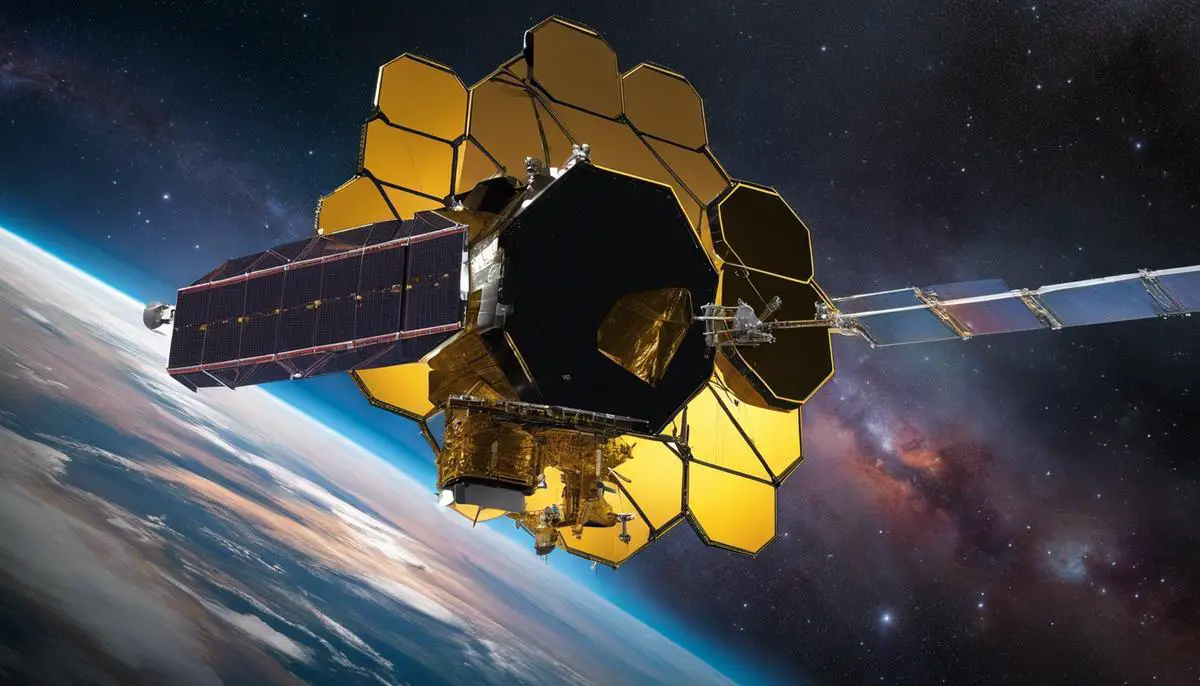Through the evolutionary steps of science and technology, humanity has continuously sought to unravel the mysteries of the cosmos. Astronomy’s greatest tool in this quest of endless curiosity comes to life with the James Webb Space Telescope (JWST). Designed with the prowess of revolutionary technology, JWST offers humanity the lens to gaze back into the envelope of time, providing tantalizing opportunities to enhance our understanding of the Big Bang Theory. In the crucible of JWST’s unique features, including powerful infrared sensors, mirrors, and spectrometers, we find the leverage to challenge and interrogate the tangible evidence of the cosmos’ origin and form. This exploration is a journey through the marvels, potential, and capabilities of the JWST and its sensorineural touch to the Big Bang Theory, a study that illuminates the past, shaping the future.
Understanding the James Webb Space Telescope: Capabilities and Mission
Cutting the Edge of Space Science: The James Webb Space Telescope and the Big Bang Theory
Introduction
The James Webb Space Telescope (JWST), oriented towards the origin of the cosmos, is a monumental instrument set to inquire into the farthest reaches of the universe. It is a showcase of human capacity for innovative exploration, seamlessly merging knowledge accrued over generations with cutting-edge technological advancements. Set for launch soon, the JWST is an ambitious, multifaceted mission designed to unveil truths concealed within the universe’s deepest vaults.
Technological Mastery
What sets the James Webb Space Telescope apart? For starters, its primary mirror measures a staggering 6.5 meters in diameter, over twice the size of the Hubble’s. Bigger mirrors mean higher resolution and sensitivity, enabling JWST to catch even the faintest, most distant signals of radiation. Additionally, it possesses advanced infrared capabilities, an essential tool for observing phenomena obscured by cosmic dust, such as star formations, or the regions beyond the reach of visible light.
Moreover, the JWST also features a remarkable cooling system that operates passively, without any moving parts. This Sunshield layers system is the size of a tennis court, and is designed to maintain extremely low temperatures (-220 degrees Celsius) necessary for the functioning of the telescope’s sensitive instruments.
Connections to the Big Bang Theory
But why are such features significant for understanding the Big Bang Theory, the widely recognized account of our universe’s birth? Firstly, the sheer magnification and sensitivity of the JWST will allow scientists to peer back into the epochs following the Big Bang, yielding precious information about the universe’s infancy, about 13.8 billion years ago.
The JWST’s advanced infrared capabilities also come into play here. The universe’s expansion over billions of years has stretched the light from the early stages, forcing its transformation into infrared light. Therefore, to better understand the Big Bang, an efficient way to gather this infrared light is crucial.
Lastly, the Webb will help decipher the period called the “Dark Ages,” the first few hundred million years after the Big Bang, when the universe was dominated by neutral hydrogen atoms. It will accomplish this by detecting the extremely redshifted emission lines of hydrogen, shedding light on this hitherto unobservable era.
Conclusion
Unlocking the mysteries of the universe requires the best tools humans can engineer. Built on the foundations of exhaustive research, robust scientific methodology, and unprecedented technological prowess, the James Webb Space Telescope serves as our latest and most accomplished astronomical torchbearer. As it drifts towards its domicile one million miles away from Earth, it carries with it the hopes of answering some of the most profound questions about our universe’s birth and evolution.
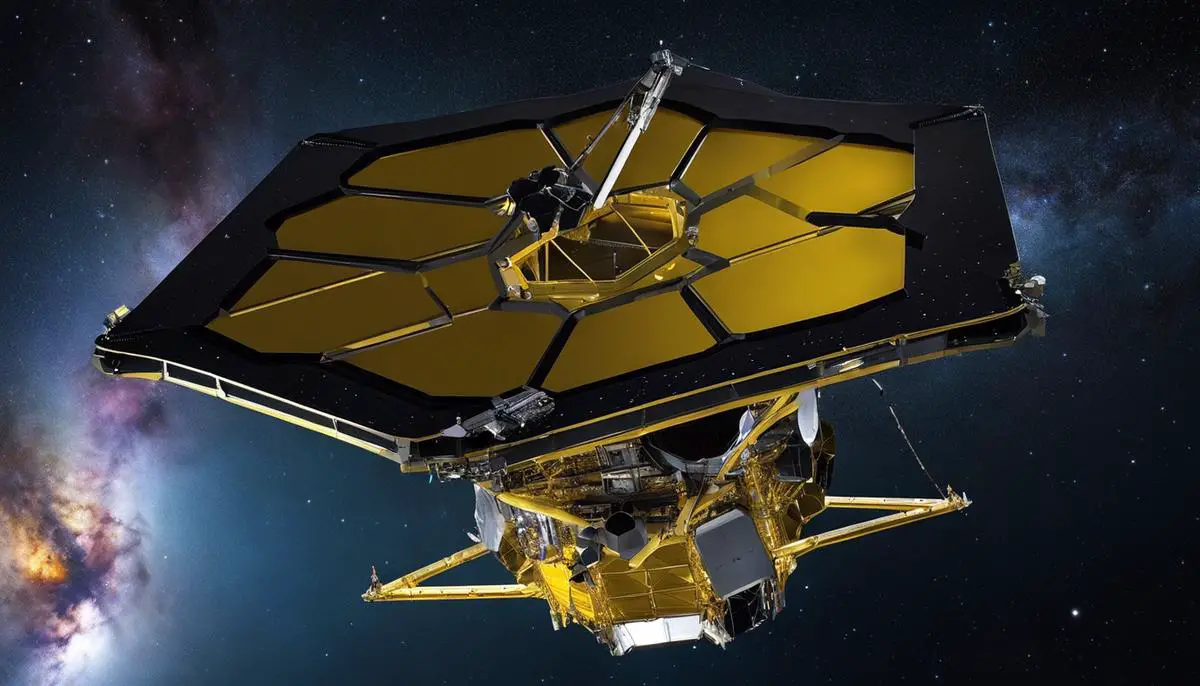
The Big Bang Theory: An Abridged Exploration
Building on the foundation of the James Webb Space Telescope (JWST)’s potential for scientific discovery, it’s crucial to consider the existing body of knowledge about the Big Bang Theory. Amassing data through numerous observations and computations over the past century, scientists globally have converged on the Big Bang Theory as the most plausible framework for the universe’s origin.
Rooted in extensive empirical evidence, the Big Bang Theory postulates that the universe originated from a singularity roughly 13.8 billion years ago and has been expanding ever since. The discovery of cosmic microwave background radiation, or CMBR, in the mid-20th century was a significant corroborative finding. This radiation reveals a heat glow that permeates the universe, seen as an echo or afterglow of the Big Bang.
Similarly, the universe’s persistent expansion is another key factual underpinning, as Edwin Hubble observed the redshift of distant galaxies, ultimately validating the idea that the universe is indeed growing in size. Additionally, the measured abundance of light elements like helium and deuterium in the cosmos fit snugly within the Big Bang nucleosynthesis predictions, fostering integral support for the theory.
Nevertheless, as overarching and supported as the Big Bang Theory is, it remains incomplete. For instance, it does not explicitly elucidate what caused the initial expansion or what existed before it. Furthermore, it fails to account for the “Dark Matter” and “Dark Energy” that seemingly constitute a large portion of our universe, serving as silent influencers of cosmic structures and expansion.
Consequently, these gaps underline the necessity for more empirical evidence that would deepen our conceptual understanding of the universe’s earliest phase. The JWST, which is equipped with sophisticated, enhanced capabilities, may help in gathering the lacking empirical data.
Specifically, its advanced infrared instrumentation will empower researchers to probe the universe’s first galaxies formed after the Big Bang, during the “Dark Ages”. It would also enhance our comprehension of how galaxies evolved over time, through direct observation of even extremely distant, and hence, early galaxies.
Moreover, its keen capacity to detect faint signals could allow scientists to probe the properties of Dark Matter and Dark Energy, enlightening us further about the universe’s fundamental constituents. In essence, technologies like JWST play an irreplaceable role in answering the lingering mysteries of the Big Bang Theory.
In conclusion, while the Big Bang Theory provides valuable insights and enjoys a robust groundwork of empirical evidence, it is not without its enigmas. The advent of innovative and powerful instrumentalities like the JWST could serve as an essential catalyst in solving these puzzles, thereby pushing the boundaries of our cosmic knowledge.
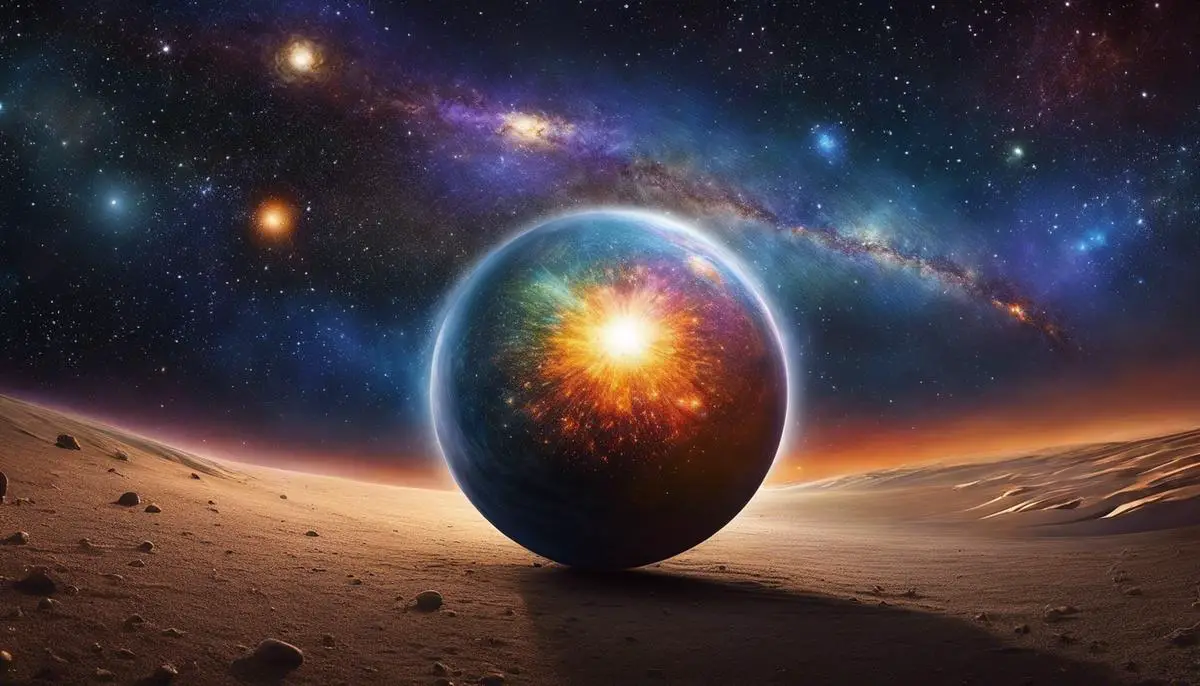
From Hypothesis to Observations: How the JWST will Empirically Test the Big Bang Theory
The James Webb Space Telescope (JWST) is an exponent of astrophysics technology at its pinnacle. The role it will play within the context of the Big Bang Theory’s empirical assessment is bound to be groundbreaking, encompassing previously challenging elements like studying fluctuations and chemical traces left by the primordial universe.
Though much of the Big Bang Theory is amply supported by empirical evidence, anomalies do exist. These inconsistencies quietly highlight the need for newer, more sophisticated observational instruments, a role ready to be filled by JWST. This telescope will surpass the visible-light limitations of its predecessors with its unprecedented infrared sensitivity, thereby aiming to record and understand cosmic events that so far eluded our realm of perception, in particular, a few lingering mysteries surrounding the Big Bang.
One such mystery JWST will attempt to clarify, is our understanding of primordial galaxies, arguably the birthplaces of the existing galactic structures. Their faint, distant light has remained concealed from our previous observatories. As the studies predict, the JWST, capable of magnifying even the faintest of light, will now provide scientists with the appropriate tools to study these early galaxies’ formation, evolution, and chemical composition.
Furthermore, the JWST will work as a narrative bridge across the cosmic Dark Ages – a rather enigmatic period that followed the Big Bang. During the Dark Ages, the universe was essentially invisible due to a lack of stars or galaxies to light up the cosmos. Our understating of how the universe transitioned from the Dark Ages to the Renaissance or the age of galaxy and star formations, is scant. As anticipated, the JWST, with its superior infrared capabilities, would be competent to detect and study the very first light sources illuminating the cosmic Dark Ages.
Apart from laying bare the vast cosmic expanse, the Big Bang Theory is also indissolubly knotted with the fundamental enigmas of Dark Matter and Dark Energy – those unseen entities that manifest only through gravitational effects. Even though analysis suggests these entities govern the universe’s mass–energy content, they remain enigmatic. The JWST, along with its exploration of early galaxies, is expected to delve into the cryptic territories of Dark Matter and Dark Energy, offering in-depth insights.
In conclusion, the JWST, with its cutting-edge technology, rightly has all eyes turned towards it. It carries the potential to remove blinders and illuminate murky corners around our understanding of the universe. Its data promises to offer a wealth of information, presenting opportunities for new discoveries, hypotheses, and perhaps, unexpected celestial revelations.
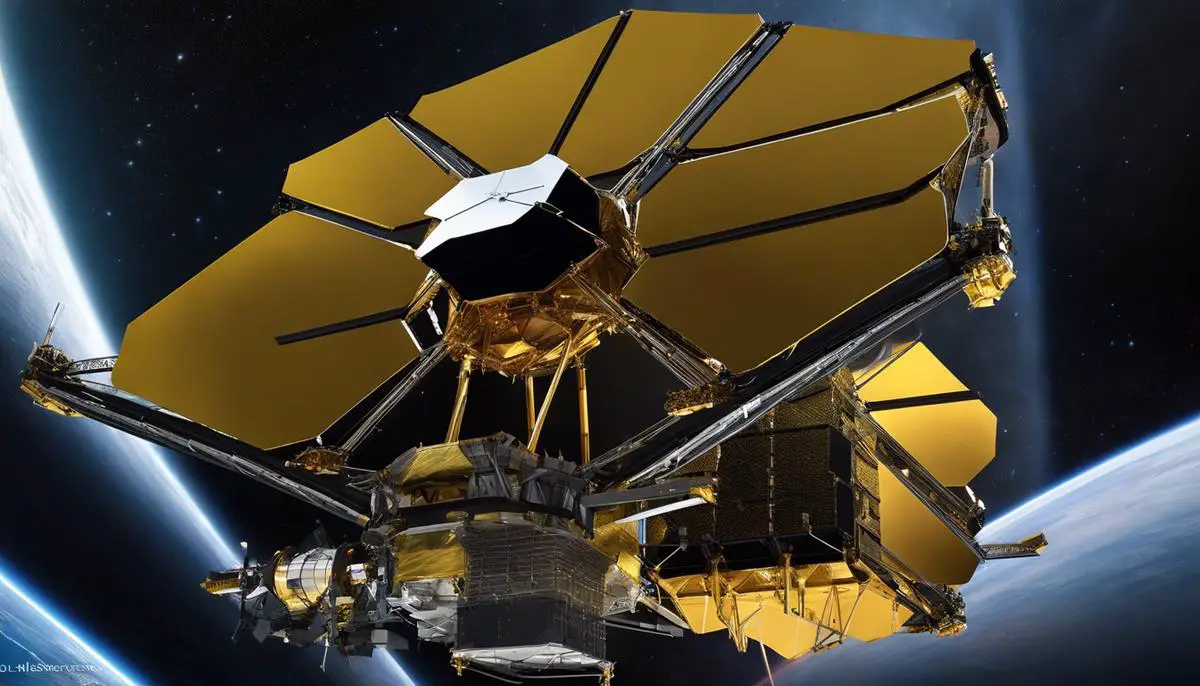
Analyzing Initial Findings and Potential Implications from JWST
With its launch, the James Webb Space Telescope (JWST) is set to significantly heighten our insight into the universe’s origin and evolution.
One of the new horizons it proposes to explore and demystify are exoplanets.
Despite the immense distances that separate them from us, the acute sensitivity of the JWST can observe and detail their atmospheres, a colossal leap that could potentially cognize the environments beyond our solar system better.
Initial observations from the JWST, while they continue to be analyzed and interpreted, have already demonstrated a profound potential to redefine our knowledge of exoplanets.
Through the telescope’s advanced spectroscopic instruments, scientists can interpret light that has passed through or reflected off an exoplanet’s atmosphere.
This comes as a masterstroke in deciphering the chemical compositions of these celestial objects’ atmospheres, hinting at possible climate conditions and potential for life.
Further, the observational abilities of the JWST can critically impact our understanding of stellar evolution.
The telescope can study stars in minute detail, earlier in their development than ever before.
Previous telescopes, while adept in their roles, still had constraints when it came to the study of young stars enveloped by thick clouds of dust.
But this obstacle is overcome by the JWST’s revolutionary infrared technology that can peer through such cosmic obscurations, revealing nascence of stars and planetary systems.
Meanwhile, regarding galactic evolution, the JWST provides a slew of opportunities.
Dense clusters of galaxies, their morphing shapes over astronomical timelines, and the apparent cosmic web of galaxies are some intrigues that the JWST’s observing prowess could help unriddle.
The thrilling prospect is that there could be a galactic find that could alter our understanding of how galaxies are structured and interconnected.
Among darker subject matters, JWST is primed for pioneering spectacular strides in our understanding of Dark Matter and Dark Energy.
They shape our universe, yet evade direct detection and defy our comprehension.
The JWST’s refined instruments, especially its ability to detect infrared radiation, will be pertinent to observe Dark Matter’s gravitational lensing effects better and study the effects of Dark Energy on the accelerating expansion of the universe.
To end this discourse, without needing any summary, it could be stated that while early observations are still settling down, the James Webb Space Telescope has already laid a path for a revolution in astronomy and cosmology.
By brilliantly elucidating on the joyously intertwined topics of cosmic and planetary origins, stellar and galactic evolution, and the mystique of the dark universe, JWST could catalyze an epoch-making shift in understanding, appreciating even more, the intriguing immensity of the cosmos that embraces us.
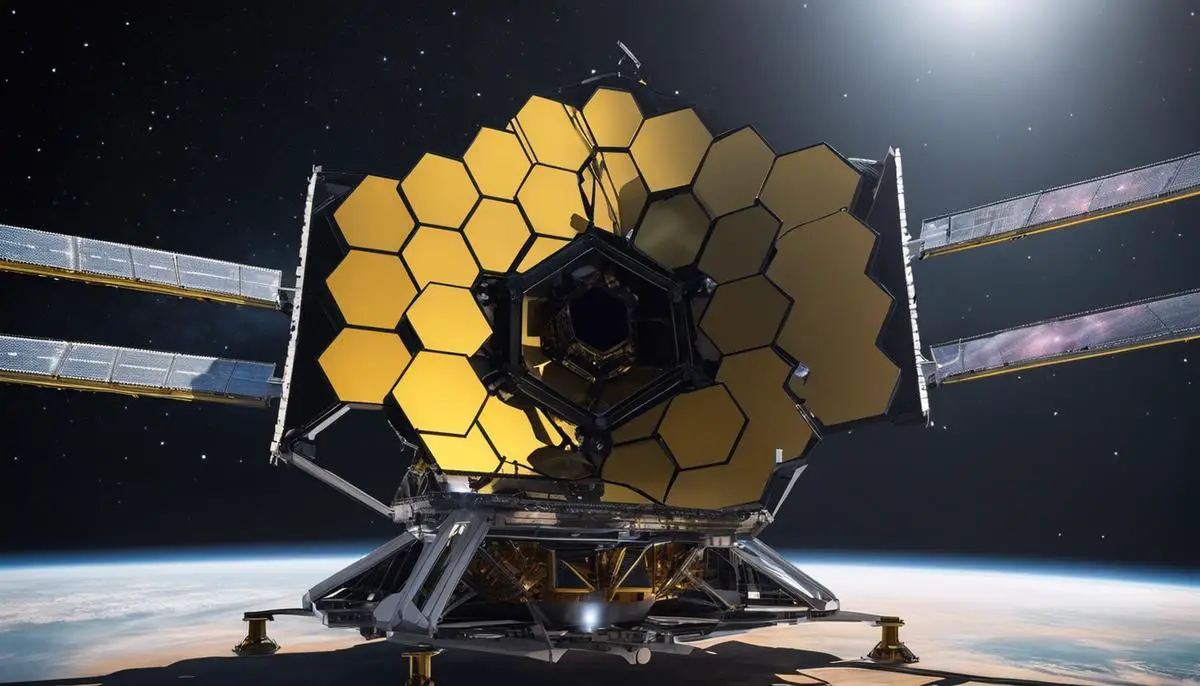
As the James Webb Space Telescope continues its quiet vigil, sifting through the cosmos’ subtleties, the implications of its findings will enkindle new questions and bold theories alike. JWST, with its advanced technologies and the wealth of data it procures, lends itself as a fulcrum in testing and refining the depths of the Big Bang Theory. The web of its observations, weaving mysteries and constructs together, will enhance our cosmic intuition, guiding us toward yet unfathomed truths. Our understanding of the Universe, in its primal beginnings and fantastic expansion, centres on the steadfast march of these observations. Indeed, the arrival of JWST marks a turning point, where today’s theories and predictions meet tomorrow’s observations, bridging the enigma of our cosmic past with the ever-evolving understanding of this vast and magnificent Universe. Thus, anchored in the realms of science and discovery, we remain, ever watchful, ever curious.
![]()
